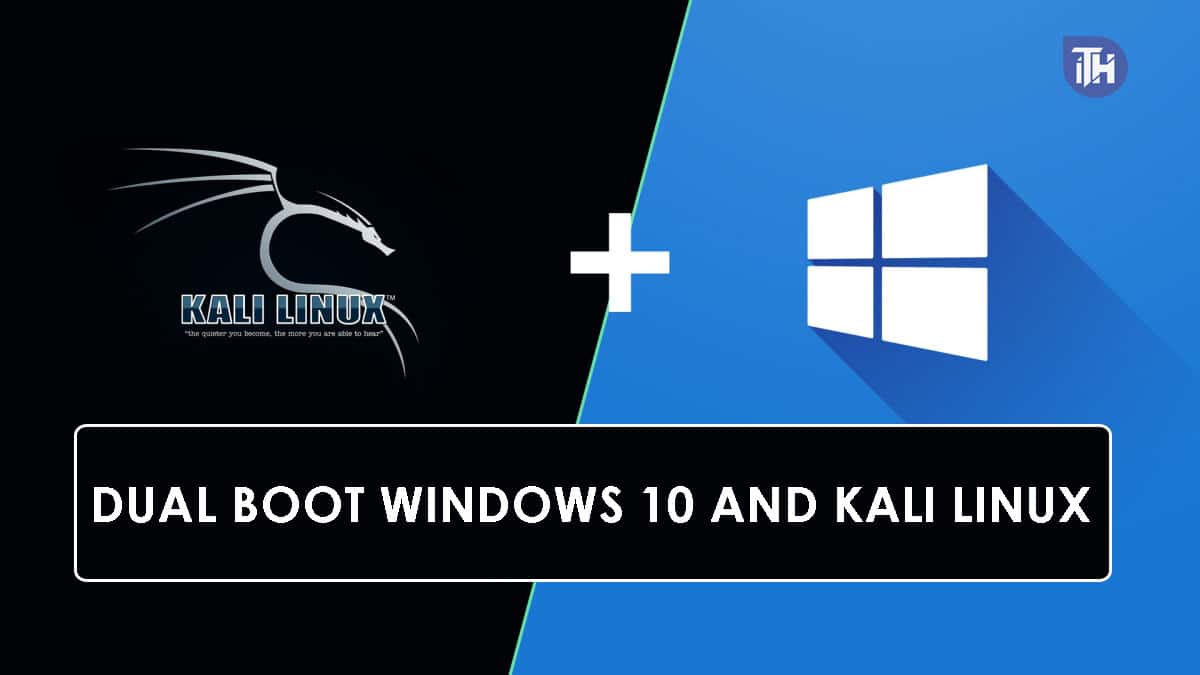- Kali Linux is a popular distro for hacking with pre-installed tools, light and handy, but many prefer Windows for daily tasks.
- Dual booting Windows 10 and Kali Linux is a solution for pen testers tired of VMs, allowing selection of OS at boot.
- Steps for dual booting include downloading Kali Linux ISO, creating a bootable USB with Rufus, allocating memory, and booting USB to install Kali Linux alongside Windows 10.
Are you a cybersecurity enthusiast, a pen tester, or just someone curious about Linux? If so, you’ve probably heard of Kali Linux—the go-to operating system for hacking and security testing. While Kali Linux is lightweight and packed with powerful tools, many of us still rely on Windows 10 for everyday tasks like gaming, multimedia, and productivity.
The good news? You don’t have to choose between the two! By dual booting Windows 10 and Kali Linux, you can enjoy the best of both worlds. In this guide, I’ll walk you through the entire process, step by step, so you can set up your dual-boot system without breaking a sweat.
Also Read: How To Safely Install Kali Linux on Android Without Root
What Is Dual Booting?
Dual booting is the process of installing two operating systems on the same computer. When you start your PC, you’ll see a menu (like the GRUB bootloader) that lets you choose between Windows 10 and Kali Linux. This setup is perfect for anyone who wants to use Kali Linux for security testing while keeping Windows 10 for daily tasks.
Why Dual Boot Instead of Using a Virtual Machine?
Many beginners use Kali Linux in a virtual machine (VM) to avoid messing with their main operating system. While VMs are great for testing, they can be slow, resource-intensive, and frustrating for long-term use. Dual booting, on the other hand, gives you:
- Better performance: Kali Linux runs natively on your hardware, not inside a VM.
- Full access to hardware: You can use your GPU, Wi-Fi adapter, and other components without compatibility issues.
- A seamless experience: Switch between Windows 10 and Kali Linux with just a restart.
What You’ll Need to Dual Boot Windows 10 and Kali Linux
Before we get started, make sure you have the following:
- A PC or laptop with Windows 10 installed.
- A Kali Linux ISO file: Download it from the official Kali Linux downloads page.
- A USB drive (minimum 4GB): This will be used to create a bootable Kali Linux installer.
- Rufus: A free tool to create bootable USB drives. Download it here.
- At least 30GB of free disk space: You’ll need this to install Kali Linux.
Also Read: Windows 7 ISO Free Full Version Download 32 or 64 BIT
How to Dual Boot Windows 10 with Linux
Step 1: Download the Kali Linux ISO File
The first step is to download the Kali Linux ISO file. Here’s how:
- Go to the official Kali Linux downloads page.
- Choose the version that suits your needs. For most users, the Standard 64-bit ISO is the best choice, as it includes all the essential tools for pen testing.
- If you’re short on disk space or only need basic tools, you can opt for the Light ISO.
Step 2: Create a Bootable USB Drive with Rufus
Once you’ve downloaded the ISO file, the next step is to create a bootable USB drive. We’ll use Rufus, a free and user-friendly tool for this process.
- Download and install Rufus from the official website: Rufus Download.
- Plug in your USB drive. (Note: All data on the drive will be erased, so back up any important files.)
- Open Rufus and select your USB drive under the “Device” dropdown.
- Click “Select” and choose the Kali Linux ISO file you downloaded earlier.
- Leave all other settings at their defaults and click Start.
- Wait for Rufus to complete the process. Once it’s done, you’ll have a bootable Kali Linux USB drive!
Step 3: Allocate Disk Space for Kali Linux
Before installing Kali Linux, you’ll need to free up some disk space on your Windows 10 machine. Here’s how:
- Press Win + X and select Disk Management, or press Ctrl + R, type
diskmgmt.msc, and hit Enter. - Right-click on a partition with enough free space (preferably 30GB or more) and select Shrink Volume.
- Enter the amount of space you want to allocate for Kali Linux (e.g., 30,000MB for 30GB).
- Click Shrink. You’ll now see unallocated space, which we’ll use for Kali Linux.
Step 4: Boot from the USB Drive
Now it’s time to boot into Kali Linux from your USB drive:
- Restart your computer and enter the boot menu. The key to access the boot menu varies by manufacturer (common keys include F12, F2, Esc, or Del). If you’re unsure, a quick Google search for “[Your PC Model] boot menu key” should help.
- Select your USB drive from the boot menu and press Enter.
- If you encounter a driver error, don’t panic! Simply unplug the USB drive for 10 seconds, plug it back in, and try again.
Step 5: Install Kali Linux
Once you’ve successfully booted into the USB drive, follow these steps to install Kali Linux:
- Select Graphical Install from the Kali Linux welcome screen.
- Choose your preferred language, country, and keyboard layout.
- Set a strong root password—this is crucial for securing your Kali Linux installation.
- When prompted to partition disks, select Manual.
- Choose the unallocated space you created earlier and select Automatically partition the free space.
- Select All files in one partition and confirm your changes.
- Wait for the installation to complete (this may take 15–20 minutes).
- When asked about the GRUB bootloader, select Yes to install it.
Step 6: Enjoy Your Dual-Boot System!
Once the installation is complete, restart your computer. You’ll now see the GRUB bootloader, which lets you choose between Windows 10 and Kali Linux every time you start your PC.
Also, Read: How To Fix “This Copy of Windows is not Genuine”
FINAL WORDS:
Dual booting Windows 10 and Kali Linux is a fantastic way to explore the world of cybersecurity without sacrificing the convenience of Windows. By following this guide, you’ve set up a powerful dual-boot system that lets you switch between operating systems with ease.


